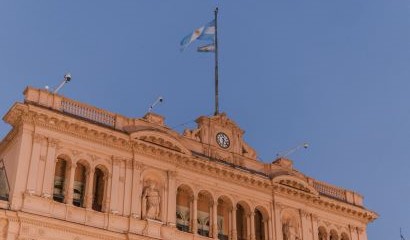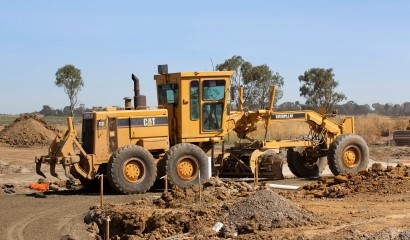If Sunnova pursues an in-court restructuring, SunPower’s Chapter 11 may shed light on what to expect
Solar company Sunnova Energy has beamed a steady stream of negative news since early March. First, the company issued a going concern warning in its 2024 10K. Only a week later, the company announced that longtime CEO and co-founder John Berger had stepped down and was being replaced by the company’s Chief Operating Officer. Next, it was reported that the strategic options being explored by the company include a bankruptcy filing.
In this article, the Debtwire legal analyst team discusses what a possible Chapter 11 filing could entail for the company given its operations and uniquely complex capital structure. In doing so, we review SunPower’s comparable bankruptcy filing last year and discuss how that case might provide a roadmap for a Sunnova bankruptcy filing – i.e., the extent to which a Chapter 11 case could involve a restructuring, asset sales, wind down or a combination thereof, and how special purpose entities (SPEs) could be treated.
Sunnova’s dealer network business model
Sunnova is an energy services company that operates on a network business model by which it partners with local dealers and contractors who originate, design, and install company-approved solar energy systems and other energy storage systems. In addition, the company sells electric vehicle charges, smart home devices, generators, HVAC systems, and roofing, among other products. Headquartered in Houston, Texas, the company has over USD 444,000 customers in more than 50 US states, with a particular operational focus in Texas, California, and Puerto Rico.
Sunnova generates its revenue from a variety of customer agreements – leases of solar energy systems, sales of energy through power purchase agreements (PPAs), and financings (loans to customers). The parent’s unencumbered cash flows are generated through residual cash flows from securitizations, fees for ongoing support services that Sunnova provides for solar energy systems (master service agreement fees), solar renewable energy credit sales, direct sales, and asset sales. As of 31 December 2024, approximately 31% of Sunnova’s customers had lease agreements, 28% had PPAs, 24% had loan agreements, and 12% had service plan agreements. For solar energy and solar storage systems that are originated under leases or PPAs, Sunnova can claim investment tax credits, which can be sold.
A complicated capital structure
An understanding of Sunnova’s uniquely complex capital structure is essential to a discussion of a potential restructuring. The company has traditionally funded its operations with debt including senior notes and convertible senior notes, asset-backed and loan-backed securitizations and warehouse facilities, tax equity, preferred equity, and common equity.
As of 31 December 2024, Sunnova had approximately USD 8.5bn in debt. Sunnova Energy International (SEI) has issued USD 575m of 0.25% convertible senior notes due December 2026 and USD 600m of 2.625% convertible senior notes due February 2028. In turn, SEI’s direct subsidiary, Sunnova Energy Corporation, has issued USD 400m of 5.875% senior unsecured notes due September 2026 and USD 400m of 11.75% senior unsecured notes due October 2028.
The company also has five non-recourse warehouse loan facilities at special purpose entities that allow for the pooling and transfer of solar energy and energy storage systems on a generally non-recourse basis to the special purpose entity or Sunnova. The special purpose entity subsidiaries have revolving or term loan financing, which is secured by solar energy and storage system assets and customer agreements. Cash flows from the assets cover these debt service payments. The loan proceeds are used to finance project costs for solar energy systems, to acquire loans, and fund reserve accounts. The aggregate amount of warehouse loans as of 31 December 2024 was USD 1.343bn.
The company utilizes securitization transactions as another means of long term-financing. In these transactions, Sunnova transfers solar energy and energy storage systems and the related customer agreements into special purpose entities that issue notes backed by those assets to institutional investors. The company also securitizes the cash flows generated by the membership interests in certain of its subsidiaries that are the managing member of a tax equity fund (described below) that owns a solar asset pool. Through 31 December 2024, Sunnova had pooled and transferred eligible solar energy systems and energy storage systems and their related receivables into 26 SPEs. The cash flows from the energy systems are used first to make interest and principal payments on the notes and then to satisfy reserve requirements. Any excess cash is distributed to the sole members, generally Sunnova’s indirect wholly owned subsidiaries. The creditors of the SPEs generally have no recourse to the other assets of the company.
Sunnova further finances its operations with co-investments from tax equity investors. The vehicles used for this purpose are non-recourse project financings called tax equity funds. Those funds use a partnership flip structure in which both the company and the investors contribute cash to acquire energy systems developed by Sunnova. The partnership then leases the systems or sells energy to customers. The investors receive almost all of the tax benefits of the solar assets, such as accelerated depreciation and investment tax credits (ITCs), and can use them to offset their other income. Sunnova, in turn, receives the majority of the cash distributions. Once the investors receive their contractual rate of return, the partnership “flips” and the company receives almost all of the cash and tax benefits. As of 31 December, Sunnova had 34 tax equity funds.
The company’s capital structure as of 31 December is summarized in the chart below.
Going concern warning
As noted above, Sunnova issued a going concern warning on 3 March, stating that the company’s unrestricted cash, cash from operations, and availability under its financial agreements were insufficient to meet obligations and fund operations for the relevant one-year period. The company reported that as of year-end, it had USD 211.2m of cash, negative working capital of USD 296.2m, limited available financing for general corporate use,[1] and that its convertible notes and senior notes were both “trading significantly below par.” The company noted it has a “history of significant operating losses, operating and investing cash outflows, and at times, working capital deficits” and that as a result it has been “heavily reliant on debt and equity financing” to fund operations and meet obligations. In addition, the company said that it is required to but does not have the capacity to pay eligible solar loans under its EZOP warehouse facility when they come due in March 2025.
Sunnova said that some of the means that it intends to use to address its financial difficulties are refinancing its existing obligations, obtaining additional debt financing for general corporate use and obtaining additional tax equity investments. As part of these efforts, on 2 March, Sunnova Solstice Borrower, an indirect subsidiary of SEI, entered into a three-year USD 185m secured term loan agreement with Kohlberg, Kravis Roberts (KKR). The loan bears a 15% interest rate and is subject to a minimum repayment of 130%. Sunnova said that it intends to use the proceeds for working capital. The loan is secured by all of the assets of the borrower and certain subsidiaries and a pledge of the membership interests of the borrower and subsidiaries of the borrower that own membership interests in the issuers of many of Sunnova’s existing securitization transactions. Thus, the loan was secured by the residual cash flow from the securitizations that otherwise would have flowed up to Sunnova.
On 12 March, in the midst of the negative financial news, it was reported that the company would engage with competing creditor factions in restructuring negotiations, the scope of which included a possible bankruptcy filing. One ad hoc group of creditors was advised by Akin Gump as counsel and Evercore as investment banker, while the other group was being advised by Paul Weiss and Ducera. The since merged creditor group has retained Paul Weiss and Evercore as advisors. Sunnova itself is being advised by Baker Botts and JPMorgan.
A possible precedent – the SunPower bankruptcy
If Sunnova ultimately opts to seek relief under Chapter 11, the recent bankruptcy case of SunPower Corporation may shed some light as to what to expect. SunPower was a residential solar power installer. When SunPower faced a decline in customer demand and it was unable to obtain additional financing from investors, it created liquidity problems that ultimately led the company to explore restructuring solutions and file for Chapter 11 on 5 August 2024. SunPower entered bankruptcy with approximately 2bn in funded debt, which included a total of USD 483m in first and second lien debt issued by company entities that filed Chapter 11 petitions. The company also held approximately USD 1.531bn in debt issued by non-debtor entities.
The non-debtor entities were parties to a series of senior and mezzanine credit facilities with lender financial institutions and certain tax equity investors through a joint venture between SunPower and Hannon Armstrong Sustainable Infrastructure Capital. The joint venture acquired, financed, and maintained a portfolio of solar energy systems owned through subsidiaries or interests in entities jointly owned with tax equity investors. The credit facilities were either lease financings or loan financings. In the case of lease financings, the company would originate leases and sell them and solar assets to special purpose entities organized in project silos, which financed the purchase of those assets from tax equity financing proceeds and other types of financing. The income streams generated from the solar energy systems would be used to pay back the financing. In the case of loan financings, the debtors would sell the loans to non-debtors, which financed the purchase of the loans from senior secured and mezzanine financing and capital contributions.
Wind-down, not reorganization, was SunPower’s goal for Chapter 11. The company entered bankruptcy with a USD 45m cash stalking horse bid from Complete Solaria for the company’s New Homes construction segment and its Blue Raven direct-to-consumer dealer and installer segment, as well as a portion of its dealer network. The company also used the bankruptcy cases to monetize its other remaining assets through a series of bankruptcy sales.
The projected recoveries for creditors under SunPower’s confirmed Chapter 11 plan were meager. First lien creditors, who held approximately USD 295m in claims, were estimated to receive only an 8% recovery. Second lien creditors holding and unsecured creditors fared even worse and were projected to get nothing.
What could a Sunnova restructuring look like in or out of Chapter 11?
Sunnova faces many of the same problems that SunPower did last year. As noted in a recent Debtwire credit report, the company’s unrestricted cash has “eroded to critical levels” and its access to the capital markets is “deteriorating.” Debtwire has estimated that at the end of 4Q24, the company had only USD 35m in unrestricted cash. And, as noted, the KKR loan eliminates certain residual income streams that could have been used to collateralize any new debt.
It has been reported that before the two creditor groups merged, the Paul Weiss-led group, which held over USD 900m in senior and convertible notes, was weighing an out-of-court recapitalization and debt reduction that could wipe out convertible noteholders and equity. In turn, the Akin-led group was reportedly weighing a strategy that would reduce Sunnova’s debt and possibly provide the convertible noteholders with some equity in the reorganized company.
There are a lot of hurdles to jump to restructure the company outside of bankruptcy. First, any restructuring would have to address the upcoming maturities on the debtors’ USD 400m in senior unsecured notes and USD 575m 0.25% in convertible senior notes due this coming September and December. Indeed, the company stated in its 2024 10K that it does “not have the resources” to settle conversions of those notes and to repay the senior notes when they come due (as well as the notes that come due in 2028).
The willingness of creditors to engage in a debt-for-equity swap or other liability management exercise will depend upon their appetite for bearing the future business risks of the company. Given Sunnova’s operating history, this may be difficult. An out-of-court financial restructuring likely would not adequately address the company’s operational problems. Sunnova has shown operating losses from at least 2022 through 2024, with losses increasing to USD 239.5m from USD 81.5m. In addition, the company is partly reliant on solar energy tax credit financing for its originations, and the uncertainties created by the Trump administration’s positions towards the tax credits could give investors pause.
Furthermore, if the company needs to raise new debt to improve its liquidity as it seeks to change course, there is the question of what unencumbered assets remain to collateralize such debt. With the KKR loan, Sunnova has already likely collateralized its most valuable unencumbered assets – the residual income streams on the energy systems and customer agreements that were transferred to the SPEs. Some estimates are that Sunnova may have posted up to USD 1bn in collateral for the KKR loan. Thus, it is unclear what additional assets the company has to offer up as first-lien collateral for any new loans.
So, the possibility remains that the Sunnova may need to file for Chapter 11 to effectuate a comprehensive debt and business restructuring, or potentially conduct asset sales and wind down. Notably, the company has taken certain steps that are often taken in preparation for a bankruptcy filing. For example, its CEO has stepped down and in late February, the company approved USD 2.125m in bonus awards for certain executive officers, including newly appointed CEO Paul Mathews, that are contingent upon the officers staying with the company through 31 December 2025. Companies making contingent bankruptcy filing plans often give bonuses to executives to incentivize them to stay with the company through a restructuring. And Sunnova, like SunPower prior to its bankruptcy filing, has engaged in workforce reductions, announcing in February that it intended to reduce its workforce by 15% to lower expenses.
If Sunnova were to file for bankruptcy, two possible options are a restructuring (subject to the challenges mentioned above) and a sale and wind down. If a Chapter 11 restructuring were to occur, the debtors would need to find an impaired class of creditors to vote in favor of a Chapter 11 plan. This likely would be the senior noteholders. Debtwire has done an analysis estimating that in a Chapter 11 restructuring, senior noteholders would be slated for an approximate 40% recovery and thus would be the fulcrum creditors to receive the equity in a reorganized company. Debtwire’s analysis also assumes a valuation showing that convertible noteholders and existing equity would receive no recovery. Assuming that convertible noteholders would not receive any recovery in an in-court restructuring, they likely would object to a Chapter 11 plan but not be entitled to vote on it. To confirm a plan, Sunnova would need to garner the support of 50% in number and two-thirds in amount of a class of senior notes claims to cram down a plan over those objections.
On the other hand, Sunnova may look to follow in the footsteps of SunPower and seek a stalking horse buyer for its unencumbered assets. As noted, the situation is complicated, because a significant portion of the company’s most valuable assets have been placed into SPEs and have already been encumbered. And unlike SunPower, Sunnova does not have a direct-to-consumer business segment like Blue Raven that it could sell. Sunnova does, however, like SunPower, have a dealer network business. There, Sunnova could potentially follow in SunPower’s footsteps and look to a sale of its dealer network as a potential source of recovery. Another potential source of recovery is the company’s proprietary dealer, customer and energy management software, which it describes in detail in its 10K.
There is also the question of what would happen to the asset-backed solar notes and warehouse facilities issued by Sunnova’s SPEs in the event of a Chapter 11 filing. The solar notes and the warehouse facilities are generally non-recourse, and recoveries on those notes would depend upon the quality of the assets transferred into the SPE. Typically, those vehicles tend to be oversecured, and investors receive a 100% recovery. It is possible, or even likely, that Sunnova would not put them into bankruptcy along with the rest of the company. Here, SunPower once again may prove to be a guide, as that company did not put its joint venture Sunstrong Capital Holdings or its special purpose entity subsidiaries into bankruptcy.
Notwithstanding Sunnova’s volatile financial situation, some creditors are showing interest in the company. It was recently reported that investment firm Oaktree acquired USD 400m of Sunnova’s debt, which will “enable it to take the lead” in restructuring discussions. If the purchased debt consists solely of the senior notes, then in a Chapter 11 case Oaktree would have a blocking position on a class comprising senior notes claims. It can thus be expected that Oaktree would have an outsized voice in any restructuring process. So, the game is on, and the coming weeks and months will reveal whether the company is able to proceed with an out-of-court restructuring or must file for Chapter 11.
Paul Gunther is a former practicing restructuring and litigation attorney. Prior to joining Debtwire as a Legal Analyst, Paul practiced in the New York offices of Dentons US LLP, Salans LLP and Mayer Brown LLP. He has represented various constituencies in high-profile restructurings.
Any opinion, analysis or information provided in this article is not intended, nor should be construed, as legal advice, including, but not limited to, investment advice as defined by the Investment Company Act of 1940. Debtwire does not provide any legal advice and subscribers should consult with their own legal counsel for matters requiring legal advice.
——————
Endnotes
[1] As of 31 December 2024, Sunnova had an available borrowing capacity of USD 623.8m under the company’s various revolving credit facilities and USD 537.5m of undrawn committed capital under tax equity funds each of which was subject to funding conditions. The borrowing capacity can be used to support the origination of certain products but is not available for general corporate use. The tax equity fund committed capital can only be used to purchase and install solar energy systems.













